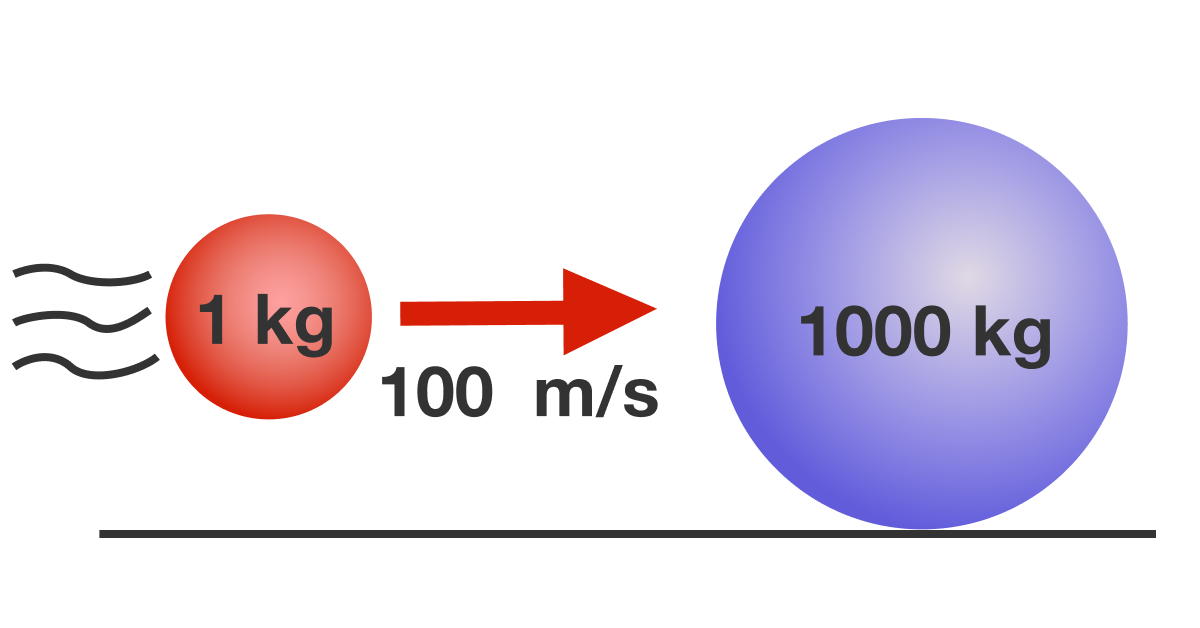Colliding Spheres

A sphere of mass 1 kg is traveling with velocity 100 m/s toward a stationary sphere of mass 1000 kg. The two spheres collide elastically. What is the total kinetic energy (in Joules) of the spheres after the collision?
Assume that both spheres have the same radius. All surfaces are smooth. There is no rolling motion.
The answer is 5000.
This section requires Javascript.
You are seeing this because something didn't load right. We suggest you, (a) try
refreshing the page, (b) enabling javascript if it is disabled on your browser and,
finally, (c)
loading the
non-javascript version of this page
. We're sorry about the hassle.
Recall that kinetic energy is conserved during an elastic collision. Therefore the total kinetic energy of the system by collision is equal to the total kinetic energy of the system after the collision.
The total kinetic energy of the system is:
KE = ∑ 2 1 m i v i 2 = 2 1 × 1 × 1 0 0 2 + 2 1 × 1 0 0 0 × 0 2 = 5 0 0 0 J □